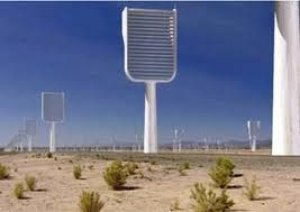
All iLive content is medically reviewed or fact checked to ensure as much factual accuracy as possible.
We have strict sourcing guidelines and only link to reputable media sites, academic research institutions and, whenever possible, medically peer reviewed studies. Note that the numbers in parentheses ([1], [2], etc.) are clickable links to these studies.
If you feel that any of our content is inaccurate, out-of-date, or otherwise questionable, please select it and press Ctrl + Enter.
Creating artificial trees is the best way to combat the greenhouse effect
Last reviewed: 30.06.2025

The Association of British Engineers believes that creating artificial forests is the best way to combat the greenhouse effect, Elena Dusi reports in an article published in the newspaper La Repubblica.
"Since forest respiration is not enough to cleanse the planet, man is trying to intervene by creating artificial forests. Mimicking the mechanism by which plants absorb carbon dioxide, the installations, not much different in appearance from solar panels, use a chemical reaction to pull CO2 out of the air. If one chestnut tree with its broad leaves absorbs one ton of greenhouse gas in a year, then an artificial tree can achieve the same result in just one day," the publication reports.
"According to the Association of British Engineers, artificial trees are the most promising way to slow down climate change. Artificial trees are currently being studied at Columbia University. Klaus Lackner, who is working on this issue, will demonstrate how tree "clones" work in London on October 24," the author of the article reports.
"These devices are easy to create and can be placed in a variety of places. The panels range in size from 1 to 10 square meters. The panels contain caustic soda. When it comes into contact with carbon dioxide, it turns into soda. But collecting the reaction product remains a serious problem. In addition, there is a financial issue: making one such "tree" can cost 20 thousand dollars," the author of the article writes.
"According to a study by the University of Colorado, in order to neutralize the carbon dioxide emitted by American cars alone (6% of all CO2 emissions in the US), it would cost $48 billion to create artificial forests. But all other geoengineering projects are even more difficult to implement," the journalist notes, "while the 8.7 billion tons of carbon dioxide entering the atmosphere today will turn into 12 billion by 2030."

 [
[